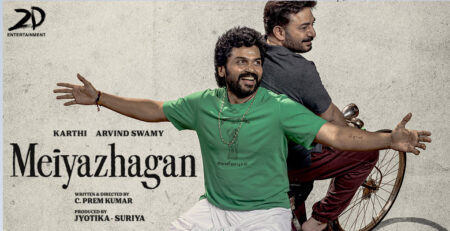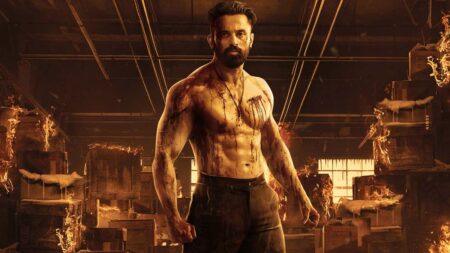Not all press campaigns over criminal cases are illegal or malicious. Yet these ‘media trials’ can hamper the natural proceedings of courts.
The other day, Delhi High Court asked the media channels to maintain restraint in reporting an ongoing legal case over the death of Bollywood actor Sushant Singh Rajput three months ago. “Reputations are getting tarnished,” a single-judge bench said on September 17, adding the “media gets to know info even before the officers themselves.” Justice Navin Chawla passed the direction in the wake of a plea by actress Rakul Preet Singh. She cited news reports against her following 34-year-old Rajput’s suicide in his Mumbai home on June 14.
Amid the ensuing investigation, the late actor’s ‘girlfriend’ Rhea Chakraborty appeared before the Narcotics Control Bureau and named Rakul in a drug-related case where the former is a prime accused. This led Rakul to move the court on September 21. That was ten days after she saw private TV channels flashing ‘breaking news’ that implied she was part of a trio who Rhea said she saw doing drugs. The claim, which lent a fresh twist to the Sushant case, triggered media reports. These, Rakul claims, violated the guidelines of the Ministry of Information and Broadcasting.
At this, the High Court asked the Centre and National Broadcasters Association among others to name any actor only when he or she is officially mentioned in the drug case. The next hearing is on October 15.
History Abroad
Media trials could sound like new. In India, perhaps, given the country’s history of the proliferation of TV channels (often seen leading such trials) is barely a quarter-century old. At a global level, media trials date back to the early 20th century—though this term didn’t exist, say, the 1920s when they did find a space in journalism. Some random instances:
A 1921 case related to Roscoe “fatty” Arbuckle eventually absolved the American comedian-director of charges of sexual assault and manslaughter of model-actress Virginia Rappe. Even so, the media’s declaration that he was guilty botched the career of the film personality (1887-1933).
The 1963-65 Moors murders, carried out by a man-woman pair in and around Manchester in England, claimed the lives of a girl and four boys aged between 10 and 17, after sexual assaults. Commentators claim the criminals were “demonised by the press”.
In 1995 began the trial of National Football league player O J Simpson. Also a broadcaster-actor, the American was tried for murdering his wife Nichole Brown and her friend Ron Goldman in 1994, even as the media cheered the case to influence the viewers. A criminal court acquitted Simpson of the charges, though a civil trial eventually held him responsible for the deaths.
Extensive media coverage of the 1991 arrest of American Rodney King for drunk driving forced a change of venue of the trial from Los Angeles County to Simi Valley in neighbouring Ventura County. The case became a sensation with video footage of the police beating up King gaining massive eyeballs.
Into the 20th century, a re-emergence of the Stephen Downing case in Britain led to the acquittal of the convict in 2002. That was 27 years after a court held the accused, a teenaged council worker in 1974, guilty of murdering a 32-year-old legal secretary named Wendy Sewell in Bakewell town of Derbyshire. Here, inversely, a local newspaper’s campaign led to reopening the case, leading to the convict’s release.
India : The Positives
Media trials in India have had their good sides, too, if providing justice to the victim is a fair result.
The Bijal Joshi case saw Delhi-based businessman Sajal Jain convicted for the rape of a 24-year-old woman with whom he had an extra-marital affair. On the New Year’s Eve of 2003 in Ahmedabad, Sajal and his four friends spiked Bijal’s drink and took turns to rape her in a Shahibag hotel. Media trials followed, and the victim got justice.
A year before Bijal was assaulted, a young business executive in Delhi was murdered. Nitish Katara was 25 when influential criminal-politician D P Yadav’s son Vikas killed him in the small hours of 17 February 2002. Reason: Katara, a graduate from the Institute of Management Technology in wester Uttar Pradesh’s Ghaziabad, had fallen in love with his classmate Bharti Yadav, sister of Vikas. The media took up the case in support of a gutsy Neelam Katara, mother of Nitish. Vikas and his cousin Vishal Yadav were later found guilty.
In the late 1990s, 25-year-old law student Priyadarshini Mattoo was raped and murdered in her house in the capital. The trial, in 1999, saw the court acquitting the accused Santosh Kumar Singh, the son of an Inspector General of Police. In 2006, courtesy the media’s intervention, Delhi High Court found Santosh guilty on both counts and sentenced him to death.
In the summer of 1999, a crowded socialite party in Delhi came to an abrupt end when a celebrity barmaid Jessica Lal was shot dead by the son of an influential politician. Wealthy Congress-nominated Haryana parliamentarian Venod Sharma’s son Siddharth Vashisht was acquitted initially in 2006. As the media trial gained momentum, Manu Sharma aka Siddharth was sentenced to jail in end-2006. (He was released in June this year.)
Negative instances
In 2015, the Mumbai police apprehended Indian-born British HR consultant and media executive Indrani Mukherjea, three years after the disappearance of her daughter Sheena Bora, an employee with the city’s metro rail. Also arrested was Sheena’s stepfather Sanjeev Khanna and Indrani’s car driver S P Rai. The charges: abducting and killing Sheena, besides burning the corpse. For all the convictions, there was widespread disgust over the media scanning Indrani’s personal life. Her personal life and shades of character unrelated to the murder case or probe came under public scrutiny, generating debates on the ethics of journalism.
In May 2008, Noida in the National Capital Region reported a double murder case, which continues to remain unsolved. Aarushi Talwar, 13, and the family’s maid Hemraj Banjade, 45, were killed, turning public suspicion on to the teenager’s parents. The media blew it up, virtually making Dr Rajesh Talwar and his wife Dr Nupur (a dentist couple) the murderers, drawing flak over the way it reported the legal proceedings.
The Khurshid Anwar case of 2013 followed the suicide of an NGO’s executive director, following a trial by the media. Anwar jumped to death from his south Delhi house after a social networking site showed the video of a girl accusing him of rape. In August 2015, another media trial led to a man losing job after his photo was posted on Facebook by a woman who accused him of sexual harassment. Sarvjeet Singh was acquitted in 2019, but the Jasleen Kaur controversy case damaged his reputation. A frontline TV channel was even fined for airing news presuming guilt.
The 1996 tandoori murder case, too, saw the media portraying the accused as a murderer, managing to change the public view before the verdict. The crime relates to Congress legislator Sushil Sharma murdering his wife Naina Sahni, suspecting her of an extramarital affair. He shot the woman dead on July 2 night, took the body to a restaurant and disposed of it in a clay oven.
In the 1973 case of Y V Hanumantha Rao Vs K R Pattabhiram regarding a curfew imposed in a small district of Andhra Pradesh, a leading English newspaper in the state carried a piece that jurists said threatened to prejudice related litigation. In 1968, a special leave petition claiming an AIR broadcast three years ago obstructed the course of justice in a case involving former West Bengal Chief Minister P C Sen.
Constitutionality and Legality
India does guarantee freedom of the press under Article 19(1), but that has no way stopped the Supreme Court to rein in trials by the media—including print, audio-visual and social—if resultant public agitation shows the potential for a miscarriage of justice. More so, in the present era of paid/fake news.




